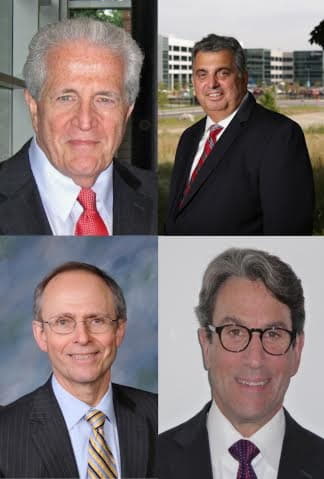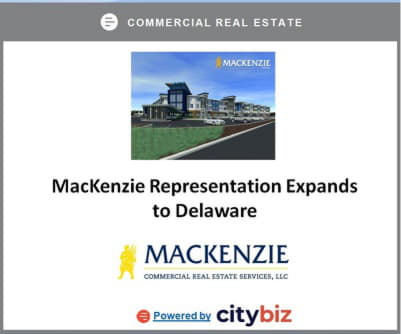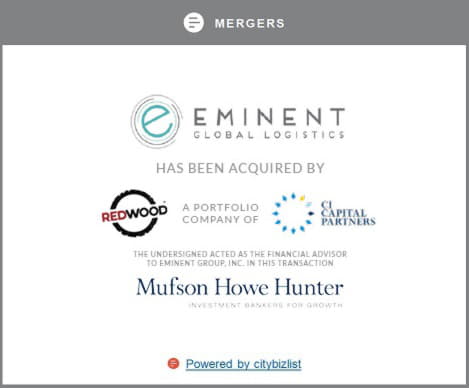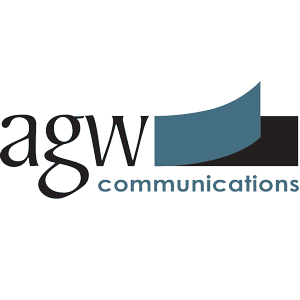Trends that Drive Tenancy include Millennial Employees, Technology, Repurposing of Suburban Office Parks

What are tenants seeking in office space today? How are capital markets and investment strategies changing? And what is the value of tenant improvements in leasing? These and other questions about development, leasing and investment trends were among the topics discussed at the spring Mid-Atlantic Real Estate Journal Conference this year.
Following are highlights of the discussion from panelists Robert Rudin, vice chairman, Cushman & Wakefield in East Rutherford; Sam Morreale, managing partner, Vision Real Estate Partners in Mountain Lakes; and Edwin Cohen, principal partner of Prism Capital Partners in Bloomfield, who offered insight while Michael McGuinness, CEO of NAIOP-NJ in New Brunswick, provided opening remarks.
Q: How do you see the current state of New Jersey’s commercial real estate market and economy?
MCGUINNESS: The New Jersey industrial and office sectors are booming, with rents up about 3 percent over last year, especially in Class A space. There has also been $13.4 billion in new private and public investment in commercial real estate, which is encouraging. However, we also see company size is shrinking overall, with more mobile workers connected to the office via the internet and mobile apps. This in turn is driving the need for better use of fixed assets by commercial real estate developers.
Synergy between developers and municipalities is becoming more important as well. Many towns are welcoming re-development of older, outdated office parks that attracts today’s employers and young professionals, with amenity-rich work environments shaping demand. Municipalities are well served to partner with developers who know the trends that attract jobs and employees. An increased demand for mixed-use projects are part of that trend, as are co-working spaces and turnkey models.
Q: What are the key trends or issues today in the office space market?
MCGUINNESS: There are several, starting with the millennial workforce. Human resources is the number one driver in development, specifically related to this population. Millennial workers’ influence has developers and landlords working to attract them with an amenity-rich environment. Those amenities are also expanding in scope to meet the expectations of this demographic.
Another factor at play is technology-driven improvements that appeal to lenders and tenants, such as high-speed fiber optic installations, multiple telecom carriers, augmented and virtual reality applications, and WiFi. In addition, we’re seeing environmental and energy upgrades growing in importance such as improvements to achieve LEED certification, electric car outlets, energy efficiency measures (LED lighting, upgraded mechanicals, and solar panels).
Q: We hear a lot about New Jersey’s “grey” market, the vintage office stock. What does the future hold for these properties, which currently number 50 million square feet?
RUDIN: We are in the process of seeing the demolition of millions of square feet of obsolete inventory. Before the market returns to a balance between supply and demand as much as 20 million square feet of obsolete inventory will need to be removed or repurposed.Numerous examples exist.One recent example is the 10 Sylvan Way redevelopment where the building was stripped to the steel.
MORREALE: Discerning companies are looking for quality work space to accommodate millennials and with so much grey stock, smart developers must seek ways to improve properties with renovations that speak to the younger workers’ expectations. These include making spaces brighter and lighter, designing collaborative environments, building near transit hubs, or creating mixed-use developments; other stock may need to come down.
These improvements deliver higher quality at a higher price point but also bolster the property’s value statement.
In terms of value that renovations bring, while there is a now a strong top end for those higher rents, there is still a large pool of price-conscious tenants at the bottom to be aware of. Therefore, developers must find ways to strike a balance and elevate the middle. It’s a question of moderation.
Q: An issue that came up at the summit was one of densifying work space. Can you speak to that?
RUDIN: Corporations are risk averse and are looking to do more with less. They are not taking space for future growth. Rather, they are seeking ways to manage their existing cost structure, and are looking at cost-per-employee; therefore, they are redesigning spaces to accommodate more workers within the same square footage. Parking lots are being enhanced to go along with this trend as well as on-site amenities and mechanicals.
MORREALE: Tenants are looking at how they can pay less and yes, cost-per-employee is an accurate metric. That said, human resources is the number one driver behind improvements, not real estate. Tenants want build outs with better kitchens, fitness centers, those amenities employees are looking for.
Q: Where do you see the future of office development?
COHEN: The real estate industry lacks the agility to react quickly to societal changes. However, by providing what tenants want and making the upgrades that suit their needs, developers can lower attrition. Owners must invest back into the property and go to market with a viable product and plan that provides choices for today’s employers and employees.
One big way to do that is through mixed use re-development of aging office parks. By integrating hospitality, entertainment, health care, and retail into suburban office parks, developers provide a richer experience. Live/work/play for suburban office parks is here for the foreseeable future, as is demand for new technologies. Owners must redevelop their assets to meet these demands in today’s commercial market.”
It’s also important for owners to prepare the ground for what comes next as the current workforce ages and technology evolves. Technology is now critical when making deals with tenants, and building owners must invest in infrastructure to compete.
Cushman & Wakefield is a leading global real estate services firm that helps clients transform the way people work, shop, and live. Our 43,000 employees in more than 60 countries help investors optimize the value of their real estate by combining our global perspective and deep local knowledge with an impressive platform of real estate solutions. Cushman & Wakefield is among the largest commercial real estate services firms with revenue of $5 billion across core services of agency leasing, asset services, capital markets, facility services (C&W Services), global occupier services, investment & asset management (DTZ Investors), project & development services, tenant representation, and valuation & advisory. To learn more, visitwww.cushmanwakefield.com or follow @CushWake on Twitter.









